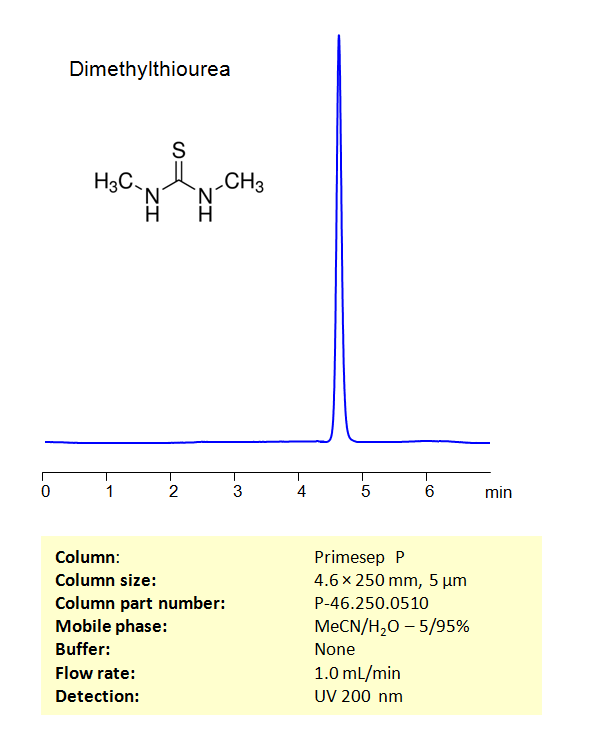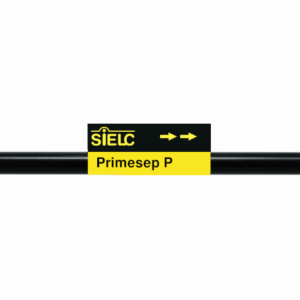Separation type: Liquid Chromatography Mixed-mode
HPLC Method for Analysis of Dimethylthiourea on Primesep P by SIELC Technologies

Dimethylthiourea is an organic compound containing two methyl groups attached to a thiourea molecule. The chemical formula is (CH3)2NCSNH2. Like other thiourea derivatives, dimethylthiourea has a range of uses in various fields, including research and industrial applications.
In research, it’s often used due to its properties as a good hydrogen bond donor and acceptor, allowing it to participate in a variety of reactions. For example, it can be used as a reducing agent in some types of reactions. It also has some interesting properties in terms of its electrical conductivity and its ability to absorb certain types of radiation, which make it useful in some niche applications.
Using a Primesep P Mixed-mode phase column and a mobile phase consisting of water and Acetonitrile (MeCN) with no buffer, dimethylthiourea can be retained and analyzed. This analysis method can be UV detected at 200 nm.
LOD was determined for this combination of instrument, method, and analyte, and it can vary from one laboratory to another even when the same general type of analysis is being performed.
High Performance Liquid Chromatography (HPLC) Method for Analysis of Dimethylthiourea
Condition
| Column | Primesep P, 4.6 x 250 mm, 5 µm, 100 A, dual ended |
| Mobile Phase | MeCN/H2O – 5/95% |
| Buffer | None |
| Flow Rate | 1.0 ml/min |
| Detection | UV 200 nm |
| Peak Retention Time | 4.63 min |
| Sample concentration | 0.03 mg/ml |
| Injection volume | 1 µl |
| LOD | 2 ppb |
Description
| Class of Compounds | Thioureas |
| Analyzing Compounds | Dimethylthiourea |
Application Column
Primesep P
Column Diameter: 4.6 mm
Column Length: 250 mm
Particle Size: 5 µm
Pore Size: 100 A
Column options: dual ended





